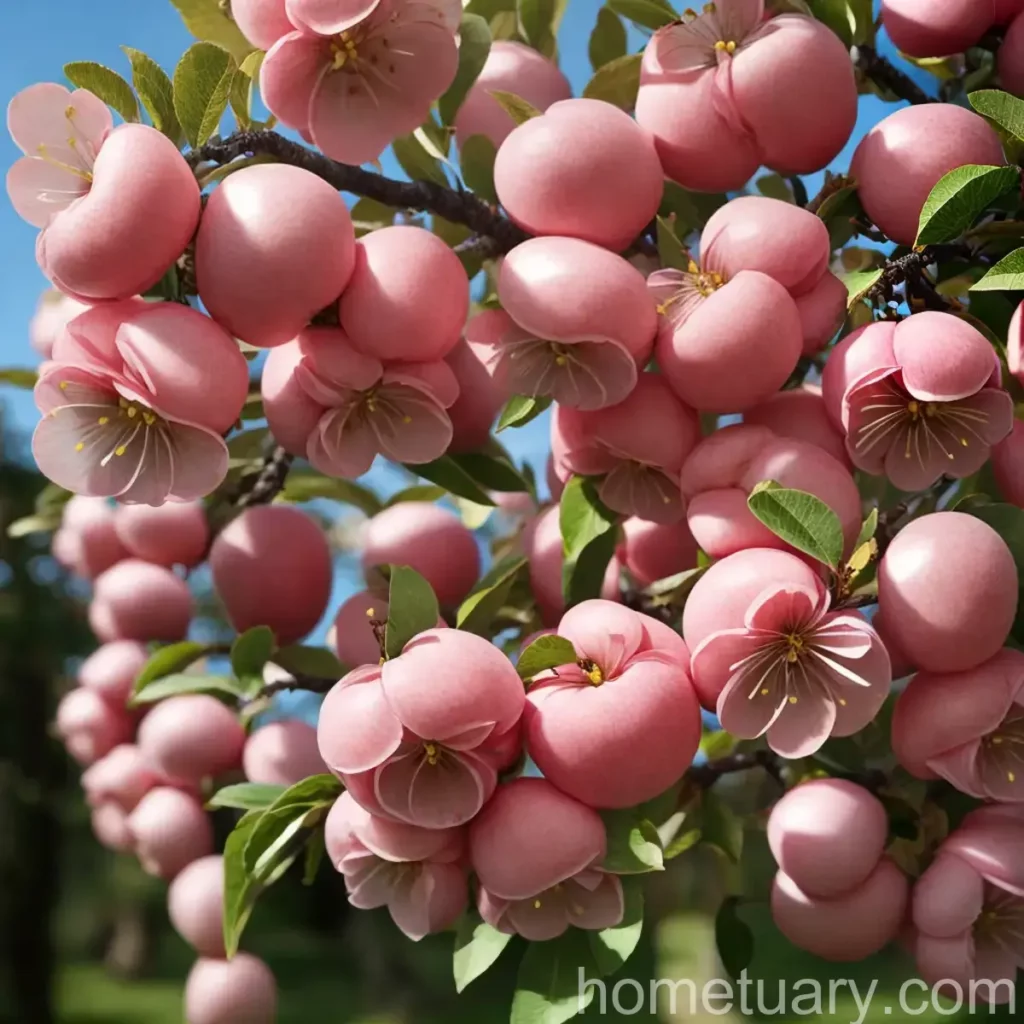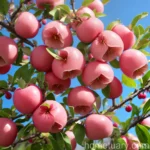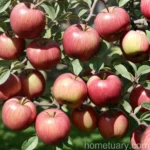The Beauty of Flowering Crabapple (Malus ‘Manbeck Weeper’)
What is Plant: Flowering Crabapple (Malus ‘Manbeck Weeper’)
The flowering crabapple (Malus ‘Manbeck Weeper’) is a stunning ornamental tree known for its weeping form and delicate, showy blossoms. This cultivar is a member of the Malus genus and belongs to the Rosaceae family. With its graceful, cascading branches and abundant floral display, the Malus ‘Manbeck Weeper’ adds a touch of elegance and beauty to any landscape or garden.
Key Takeaways – Flowering Crabapple (Malus ‘Manbeck Weeper’)
Before delving into the cultivation and care of the Malus ‘Manbeck Weeper, let’s explore the key takeaways of this captivating flowering crabapple tree.
- Foliage: Deciduous
- Form: Weeping
- Flower Color: Pink
- Bloom Time: Spring
- Fruit Color: Red
- Size: Small to medium (6-8 feet in height, 8-10 feet in spread)
With its unforgettable aesthetic appeal, the Malus ‘Manbeck Weeper’ is a beloved addition to gardens, parks, and urban landscapes.
Culture
To ensure the thriving growth and stunning appearance of the Malus ‘Manbeck Weeper, it is vital to understand its cultural requirements, including water, sunlight, fertilizer, soil, and pruning.
Uses
The Malus ‘Manbeck Weeper’ serves various purposes, enhancing the beauty and character of different settings. Its uses include:
- Ornamental Purposes: As an ornamental tree, the Malus ‘Manbeck Weeper adds visual interest and flair to gardens, landscapes, and public spaces.
- Pollinator Support: The tree’s blossoms attract bees and other pollinators, contributing to the health of local ecosystems.
- Fruit Display: The red crabapple fruits, which follow the blossoms, create a colorful and picturesque effect.
Water
Proper watering is essential for the Malus ‘Manbeck Weeper’ to maintain its vitality and striking appearance. As a general guideline, it is advisable to water the tree deeply but infrequently, allowing the soil to dry out slightly between watering sessions.
Sunlight
The Malus ‘Manbeck Weeper’ thrives in full sun, requiring at least 6-8 hours of direct sunlight daily. Adequate sun exposure is crucial for the tree to produce an abundance of flowers and fruits.
Fertilizer
A balanced and slow-release fertilizer can support the growth and blooming of the Malus ‘Manbeck Weeper. Opt for a fertilizer with a formulation such as 10-10-10, applying it according to the manufacturer’s instructions in the early spring.
Soil
Well-drained soil is paramount for the Malus ‘Manbeck Weeper to thrive. The tree prefers slightly acidic to neutral soil with a pH level ranging from 6.0 to 7.0. Amending the soil with organic matter can improve its quality and texture, creating an optimal environment for the tree’s roots.
Pruning
Regular pruning is valuable for maintaining the graceful weeping form and promoting healthy growth of the Malus ‘Manbeck Weeper. When pruning, focus on removing dead, damaged, or diseased branches while also correcting the tree’s shape and density.
Propagation
The propagation of the Malus ‘Manbeck Weeper can be achieved through several methods, including grafting and hardwood cuttings. Select a suitable propagating method based on your proficiency and resources, ensuring the production of healthy and true-to-type progeny.
Container Popularity
While the Malus ‘Manbeck Weeper is predominantly grown in the ground, its unique form and dimensions make it an intriguing candidate for container cultivation. When grown in a container, the tree can serve as an eye-catching accent on patios, balconies, or other confined spaces.
Container
When cultivating the Malus ‘Manbeck Weeper in a container, it is crucial to select a spacious and sturdy pot to accommodate the tree’s root system. Additionally, ensure that the container provides adequate drainage to prevent waterlogging, which can compromise the tree’s health.
Common Diseases
Despite its outstanding resilience, the Malus ‘Manbeck Weeper is susceptible to certain diseases that can affect its foliage, blossoms, and fruits. Understanding these common diseases is pivotal for implementing preventive measures and timely interventions.
Disease Diagnosis
To effectively manage and mitigate diseases in the Malus ‘Manbeck Weeper, it is imperative to accurately diagnose the symptoms and identify the causal agents. Some common diseases that may afflict the tree include:
- Apple Scab (Venturia inaequalis): Notable for causing dark, scabby lesions on leaves and fruits.
- Powdery Mildew (Podosphaera leucotricha): Recognizable by the powdery white coating on leaves and shoots.
- Fire Blight (Erwinia amylovora): Characterized by wilting, blackening, and “scorched” appearance of branches and blossoms.
Common Pests
In addition to diseases, the Malus ‘Manbeck Weeper may encounter various pests that can compromise its health and vigor. Vigilance and prompt action are essential for pest control and prevention. Some common pests that may affect the tree include:
- Aphids: Small, sap-feeding insects that can cause curling and distortion of leaves.
- Caterpillars (Such as Tent Caterpillars): These voracious feeders can defoliate the tree if their populations are not managed.
- Japanese Beetles: Known for their voracious appetite, these beetles can skeletonize the foliage of the Malus ‘Manbeck Weeper.
Botanist’s Tips
As a plant scientist, I offer the following tips for cultivating and caring for the Malus ‘Manbeck Weeper:
- Regular Monitoring: Regularly inspect the tree for signs of diseases, pests, or other issues, intervening promptly to maintain its health.
- Adequate Air Circulation: Promote sufficient air circulation around the tree, as improved airflow can help deter diseases such as powdery mildew.
- Mulching: Apply a layer of organic mulch around the base of the Malus ‘Manbeck Weeper to conserve soil moisture, regulate temperature, and suppress weed growth.
Fun Facts
The Malus ‘Manbeck Weeper is not only a visually captivating tree but also boasts some intriguing qualities and historical significance:
- Cultural Symbolism: Crabapple trees have been historically associated with folklore, and some varieties have been cultivated for specific purposes such as cider production.
- Wildlife Support: The tree’s fruits, in addition to their ornamental appeal, provide a valuable food source for various wildlife species, contributing to local biodiversity.
Links to External Resources
To further supplement your understanding of the Malus ‘Manbeck Weeper and its cultivation, here are some valuable resources:
- The American Crabapple: Charm for Every Season: An in-depth guide on crabapple trees, their cultivation, and landscape uses.
- Growing Weeping Trees in Containers: A resource highlighting the techniques and considerations for growing weeping trees, including crabapples, in containers.
As you embark on the journey of nurturing the Malus ‘Manbeck Weeper and exploring its striking beauty, I hope this comprehensive guide equips you with the knowledge and insights needed to foster the tree’s growth and splendor. Happy gardening!















